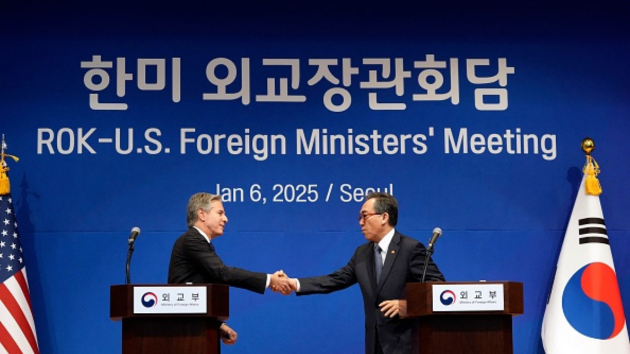How a deadly apartment fire fueled anti-zero-COVID protests across China: ANALYSIS
Written by ABC Audio All Rights Reserved on November 27, 2022

(HONG KONG) — Chinese President Xi Jinping is facing the greatest challenge to his signature zero-COVID strategy as unprecedented anti-lockdown protests have spread across the country over the weekend, popping up in major cities like Shanghai, Guangzhou, Wuhan and even the capital Beijing.
Anger stemming from a deadly apartment fire Thursday night in the far western city of Urumqi in China’s Xinjiang region that killed 10, including a 3-year-old child, have brought Chinese citizens out to the streets calling for an end to lockdowns. Some are even crying for the Communist Party and Xi himself to step down.
According to local officials, the deadly fire was caused by a faulty power strip that caught fire on the 15th floor of a high-rise apartment, but it took the fire department over three hours to put out the flames.
Videos of the blaze went viral on Chinese social media, showing firetrucks unable to get close to the flames. Many across the city questioned whether COVID restrictions had gotten in the way of first responders and left people trapped inside unable to flee.
The authorities denied this, but anger was already brewing as much of Xinjiang, including its regional capital Urumqi, had been under lockdown for over 100 days, since August.
On Friday night, videos emerged of hundreds Urumqi citizens pushing through the lockdowns around their residential compounds and marching towards the local government, demanding them to lift the lockdown. Social media videos showed crowds, wrapping themselves in patriotism as protection, marching through the frigid night alternatively singing the Chinese national anthem, “March of the Volunteers,” and the socialist hymn “The Internationale.”
Hours after the crowds confronted the city officials, the Urumqi city government suddenly announced they would finally lift lockdowns in “low-risk” neighborhoods and restart public transportation Monday.
While Urumqi residents may have gotten some of their demands met, the deadly fire set something off across China, becoming a focal point of public anger towards the harsh COVID restrictions.
The late-Chinese leader Mao Zedong famously said, “a single spark can start a prairie fire.” The “spark” of the Urumqi fire spread beyond the Chinese internet faster than censors could catch up, and by Saturday night, spontaneous protests and vigils popped up across the countries in college campuses and major cities.
This was prominent in Shanghai, where many residents still harbor fresh memories of their messy two-month lockdown earlier this year.
Hundreds of angry Shanghai residents gathered on consecutive nights over the weekend symbolically on Middle Urumqi Road in the tony former French Concession neighborhood, lighting candles and cursing zero-tolerance COVID measures with some openly daring to chant, “Communist Party step down” and “Step down, Xi Jinping, step down.”
Police officers mostly let the crowd disperse Saturday night but made arrests in early morning hours of some of the remaining protesters.
On Sunday, the protests spread to more cities including Beijing, which was entering a de-facto lockdown dealing with a fresh outbreak.
Hundreds of students gathered outside the main dining hall of Beijing’s prestigious Tsinghua University, which happens to be Xi’s alma mater, raising blank sheets of paper to decry the growing censorship and calling for “freedom of speech.” It was scene unseen on college campuses in China since the Tiananmen Square crackdown in 1989.
The blank-sheet protests were seen again near the Liangmaqiao diplomatic district, close to the U.S. and South Korean embassies in Beijing Sunday night, accompanied with cries of “no PCR tests, only freedom.”
The scenes were repeated across the country from the first COVID epicenter of Wuhan to the tech center of Hangzhou to the far-flung and usually laidback backpacker hub of Dali in southwestern China.
Adding to the national frustration, many across the country have been glued to the Qatar World Cup games on China’s state broadcaster, complete with cutaways of the raucous maskless crowds, leading to sarcastic discussions online whether China was “not the same planet” as Qatar.
By Sunday’s game between Japan and Costa Rica, CCTV Sports stayed on close-up shots of the players, referees and coaches when the ball was not in play instead of showing the maskless fans in the stands.
On Nov. 11, Beijing had issued new guidelines to improve COVID measures, promising to lessen the impact of their restrictions. It was initially taken to be a signal that Beijing was laying the groundwork to open up.
Record outbreaks across the country, however, have snapped many cities shut again. Most local jurisdictions are in charge of their own COVID enforcement and the officials’ jobs are on the line if they mismanage an outbreak, leading them to err on the side of harsher measures no matter the effect on residents.
For nearly three full years, China’s “dynamic zero-COVID” strategy meant one infection is too much.
By Sunday night, some city governments were tweaking their restrictions in real time. As the protesters gathered in Liangmaqiao, Beijing officials said they lifted lockdowns on 75 neighborhoods and announced new guidelines for enforcement that included no snap-lockdown lasting more than 24 hours.
While China’s record daily case numbers are not high by international standards, running 39,906 cases Sunday with no new deaths, the Japanese investment bank Nomura estimates that more than 21.1% of China’s total GDP is under lockdown, on par with the economic impact of Shanghai’s lockdown in the spring.
China, in a way, is a victim of its own success. The zero-COVID policy undoubtedly saved lives during the pandemic, with only 5,232 official COVID deaths over nearly three years, but has also isolated much of the Chinese population from any type of natural immunity.
For Xi Jinping and the Chinese government, it remains a question of which would cause more instability: loosening up and letting a COVID “exit wave” quickly cause up to hundreds of thousands of deaths and overwhelm the national health system in the very best-case scenario presented by some health officials, or tolerate the whack-a-mole of still-sporadic and unorganized protests across the country.
For a country that spends more on public domestic security than on their military, the answer is still on the side of zero-COVID. But as the anger spreads, many believe time may not be on zero-COVID’s side.
Copyright © 2022, ABC Audio. All rights reserved.






